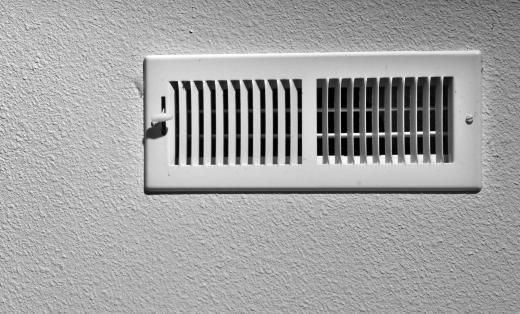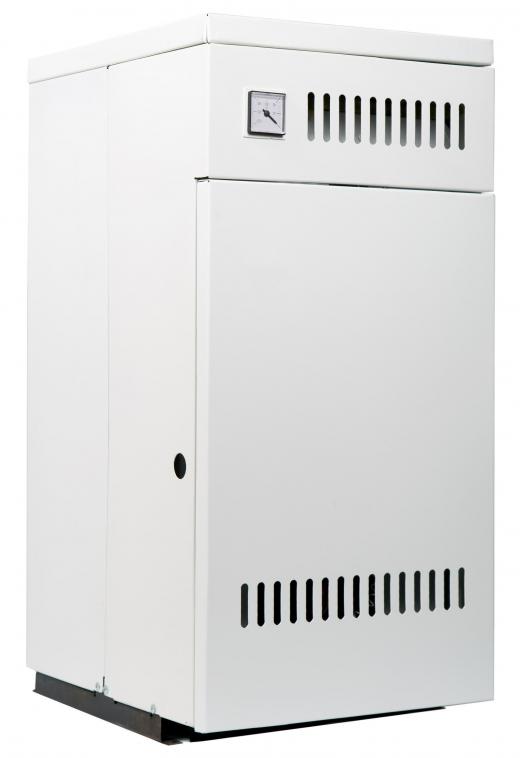Duct design is a critical part of passing warm or cool air throughout a building. There are primarily four major types of ductwork that distribute and intake air in a Heating Venting and Air Conditioning (HVAC) system. The trunk and branch method, the radial method, the spider method and the perimeter loop all perform this task in different ways and usually correspond to a particular building type.
All duct design revolves around the furnace unit. Air conditioning, while its unit is located outside of a building, also passes through this unit in order to incorporate the same ducts. A furnace is normally located in the basement of a home or building and its size depends on the building. Homes frequently have a furnace about the size of a refrigerator, but large buildings can have multiple furnaces that can take up entire room's worth of space. Regardless of size, all ductwork revolves around this spot in a building because it is the source of all air being ventilated.

The trunk and branch method of duct design is one of the most common. Normally, this type of duct installation consists of two large, main ducts that exit the furnace in opposite directions, running directly below the middle of a building, much like a tree trunk. Several branch-like smaller ducts shoot off from this main duct. These smaller branches lead to individual rooms and provide heating and air conditioning.

Another popular method for duct design is the radial configuration. In this formation, several branches of ductwork stem off directly from the furnace and individually reach every room. This method works for smaller homes and buildings, but can be inefficient for larger buildings because of the amount of ductwork needed.
The spider style of duct design is similar to the radial configuration, but slightly more efficient. In this configuration a few main ducts stem off from the furnace, but once these ducts near the rooms, they split off in multiple directions to reach the appropriate vent. The configuration often looks like the legs of a spider.
The perimeter loop is probably used least by HVAC duct professionals. This configuration takes the radial method's use of individual ducts leading to every room, but adds an additional element. Each individual duct is connected around the perimeter of the building by added ducts, making a loop that passes excess hot or cool air to the next vent.
